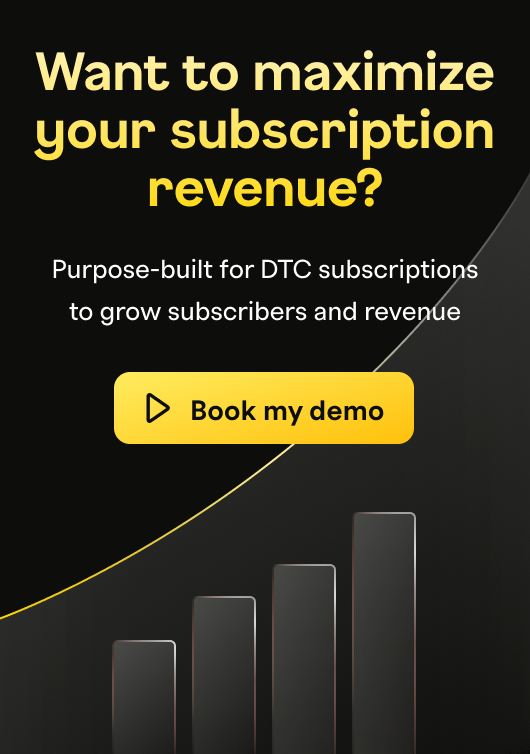How to choose the right revenue recognition software

As companies continue to incorporate subscription-based business models and deliver more personalized plans and product offerings, they face unique revenue recognition challenges that spreadsheet accounting can no longer support.
High-velocity, high-volume customer contracts and modifications like upgrades, downgrades, and pause options create the need for revenue recognition automation.
A revenue recognition platform is crucial for accurate and timely accountings–helping you streamline accounting processes, minimize errors, and ensure compliance with ASC 606 and IFRS 15 standards.
In this article, we'll share a step-by-step guide on choosing the right revenue recognition software for your subscription business based on your specific needs.
Why is revenue recognition automation important?
Traditionally, the revenue recognition process has been manual and time-consuming, and often a whole team may be engaged to do what the right software is designed to do automatically.
Working with a recurring revenue platform to streamline these processes can bring several benefits to your business, such as:
Reduced risk: Inaccurate revenue recognition can lead to financial restatements, audit issues, and legal complications. Automation reduces the risk of such problems, safeguarding your company's reputation and financial stability.
Accuracy and efficiency: Subscription businesses typically offer a variety of pricing plans, discounts, and add-ons. Automated processes accurately account for these complex billing structures, ensuring that revenue is recognized correctly for each customer.
Real-time visibility: Automated revenue recognition provides real-time visibility into a company's financial performance. This allows better decision-making, as subscription businesses can track revenue, expenses, and profitability on an ongoing basis.
Scalability: As your business grows and acquires more customers, the volume of transactions and revenue streams can become overwhelming. Automation allows for scalability without a proportional increase in accounting resources.
Streamlined auditing: Automated revenue recognition makes it easier for external auditors to verify financial statements and compliance with accounting standards. This can lead to shorter audit timelines and lower audit costs.
Choosing the right revenue recognition software
Selecting the ideal platform requires a thorough analysis. We get it. The key points outlined above can guide your teams toward a solution that aligns with your business.
It’s time to review the process of picking the right tool. Here’s a step-by-step guide on choosing the right revenue recognition software for your subscription business.
Step 1: Identify your revenue recognition needs
Before reviewing any solutions, determine your revenue recognition needs. Understand the accounting standards that apply to your business, your revenue streams, and the types of reports and data you’ll need to generate. You may need to account for deferred revenue, recognize revenue over the life of a subscription, and handle cancellations, upgrades, and downgrades.
Need some help? Check out our guide: Five revenue recognition must-haves for subscription businesses
Step 2: Research revenue recognition software
Now that you’ve determined what the revenue recognition challenges of your own business are, it’s time to review the alternatives. Make a list of all the non-negotiable features the ideal platform should have–considering revenue management, compliance, forecasting, and resources.
Look for software explicitly designed for subscription-based businesses, as you want a tool that can handle these complexities. Recurly, for example, is a subscription and billing platform that handles revenue recognition for subscription businesses–automating compliance with multiple revenue reporting standards with a fully configurable solution.
Step 3: Consider the integration options & reporting capabilities
You need a platform that can easily integrate with your existing ERP and other accounting systems. This will make it easier to share data between systems, helping you find and analyze subscription data in just one place.
Step 4: Consider the costs
Make sure to evaluate the cost of the software against its features and benefits, including all the implementation, training, and ongoing support costs.
Here are some common costs that a company may incur when implementing a revenue recognition platform–note that these can vary depending on the specific platform, the size and complexity of your business, and other factors:
Training and onboarding: These are the costs incurred when training your finance and accounting teams to use the platform effectively, as well as onboarding new users.
Integrations: You may need to integrate the platform with your existing systems, involving development and consulting costs.
Data migration: If you’re transitioning from an existing system to a new one, you may incur data migration costs to transfer customer data, billing information, and transaction history.
Maintenance and support: Like any software, revenue recognition platforms require ongoing maintenance and updates to ensure they remain current, compliant, and secure.
Scalability: As your business grows, you must accommodate additional transactions and complexities, which can lead to additional costs.
Step 5: Request a software demo
Before making a final decision, see the software in action to evaluate its user interface, reporting capabilities, and integration options. You get a glimpse of what your revenue recognition activities would look like.
How Recurly makes revenue recognition easier
Recognizing revenue correctly is essential not only for compliance but also for making informed business decisions, and selecting the right revenue recognition software has become more critical than ever.
Recurly is a subscription management and recurring billing platform that allows you to streamline the complexities of revenue recognition. With Recurly, you get:
Ease of use and implementation: An intuitive user interface that implements quickly without disrupting your business operations and creates monthly journal entries.
Ability to handle complex billing and revenue recognition scenarios: A platform that streamlines revenue management for all your different pricing tiers, discounts, bundles, and promotions.
Compliance with accounting standards: A software compliant with ASC 606 and IFRS 15 that ensures your accounting practices are up to date and you’re accurately accounting for revenue.
Automated dashboards and reports: A single source of truth that lets you close the books faster and forecast monthly recurring revenue more accurately and predictably.
Ability to adapt and grow with your business: A platform that covers your current and future business needs.
With the right software, you free your finance and accounting teams from revenue compliance complexities to focus on growth.
Want to see how Recurly can help you automate and streamline revenue recognition?


